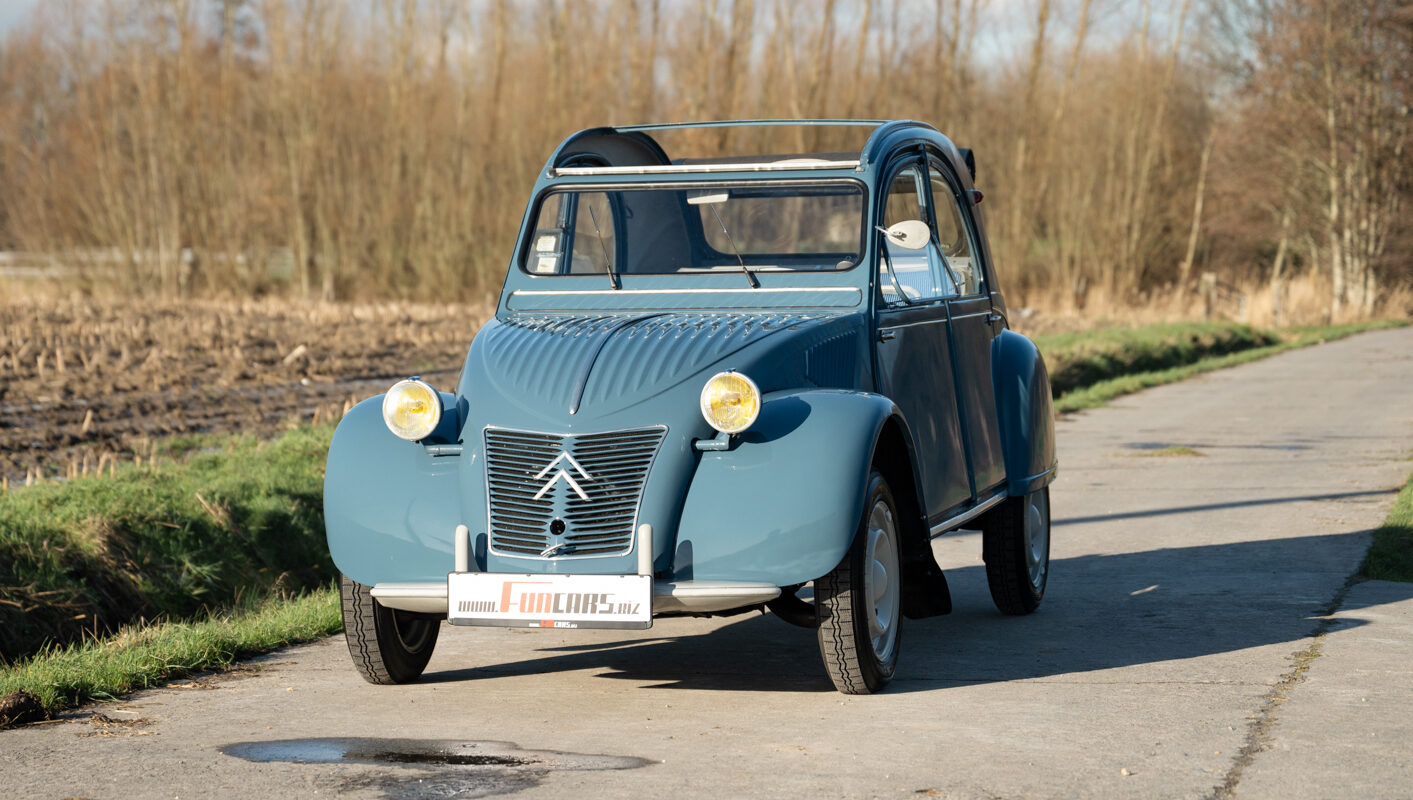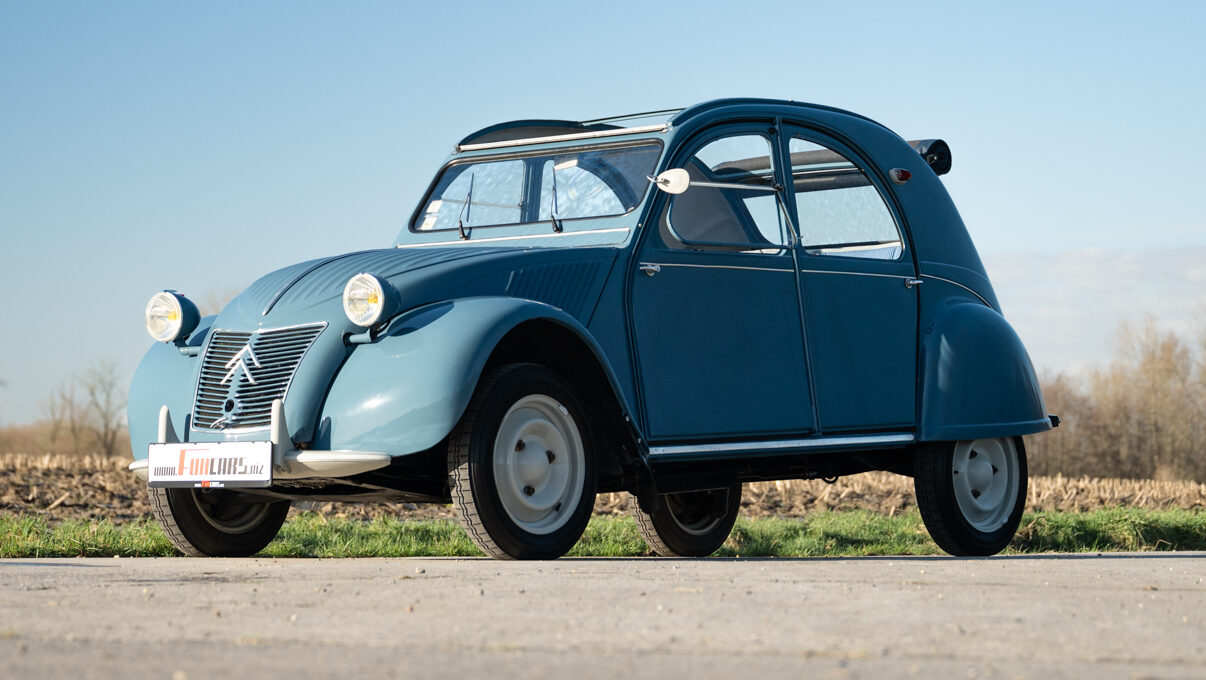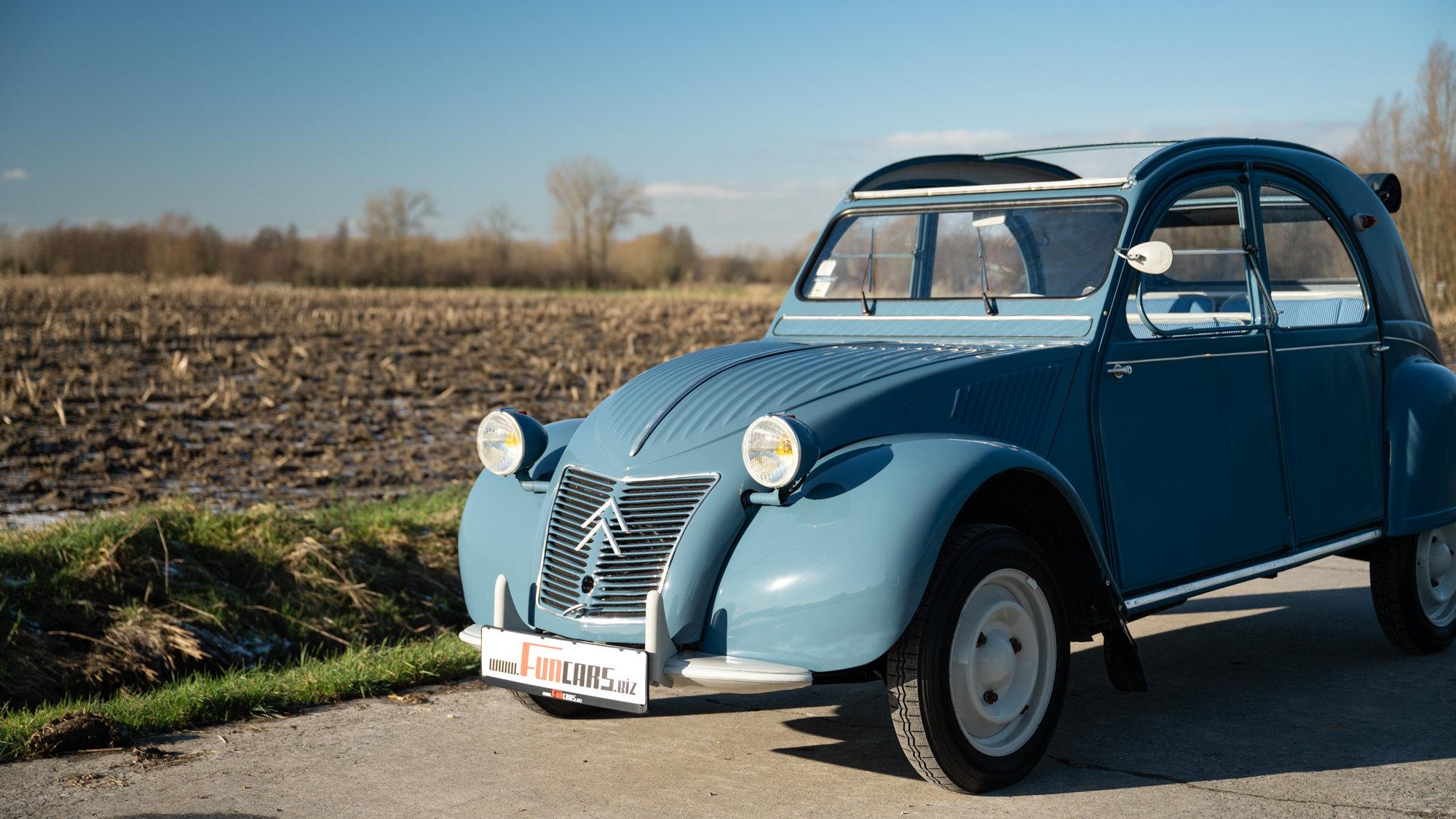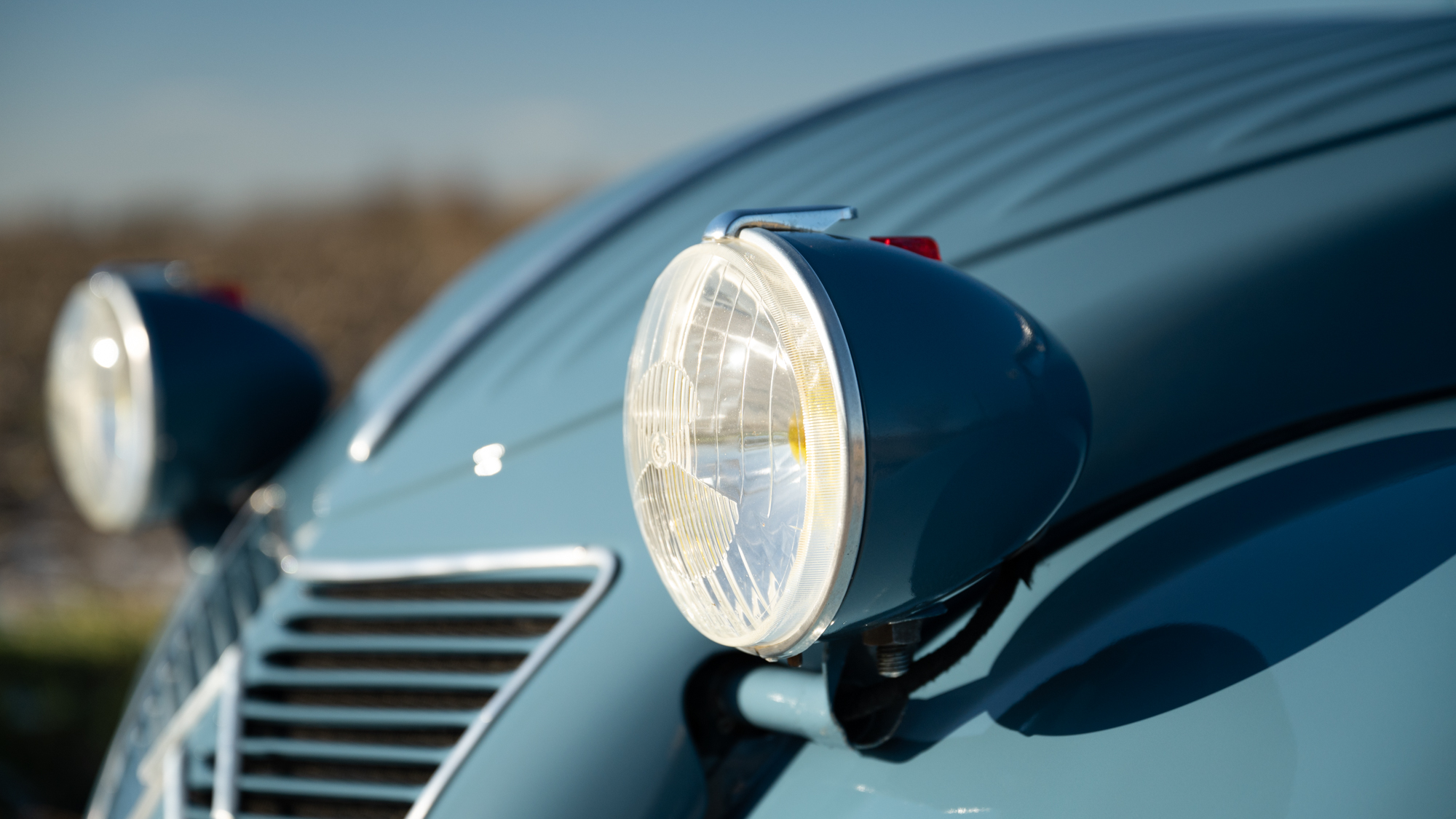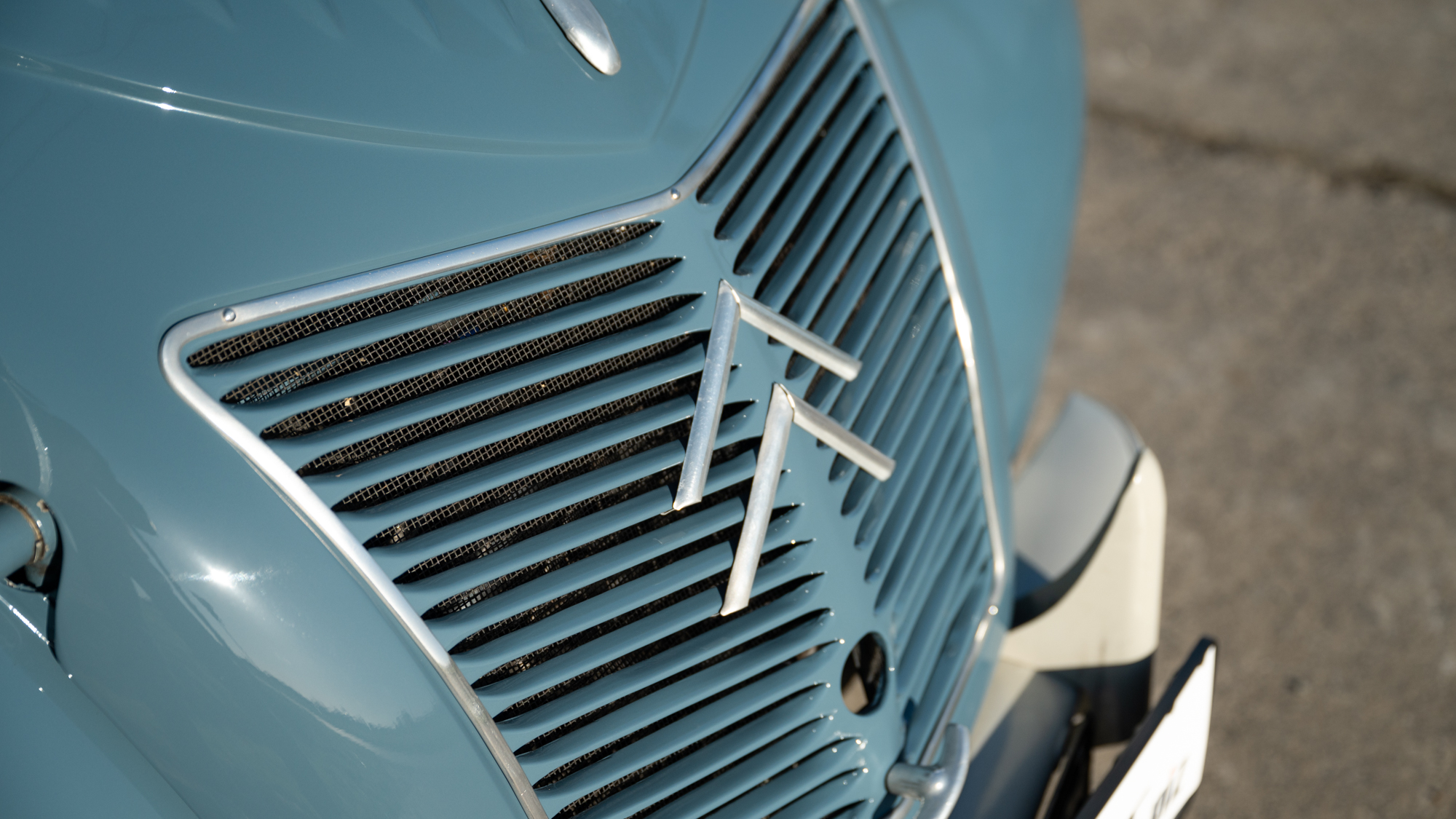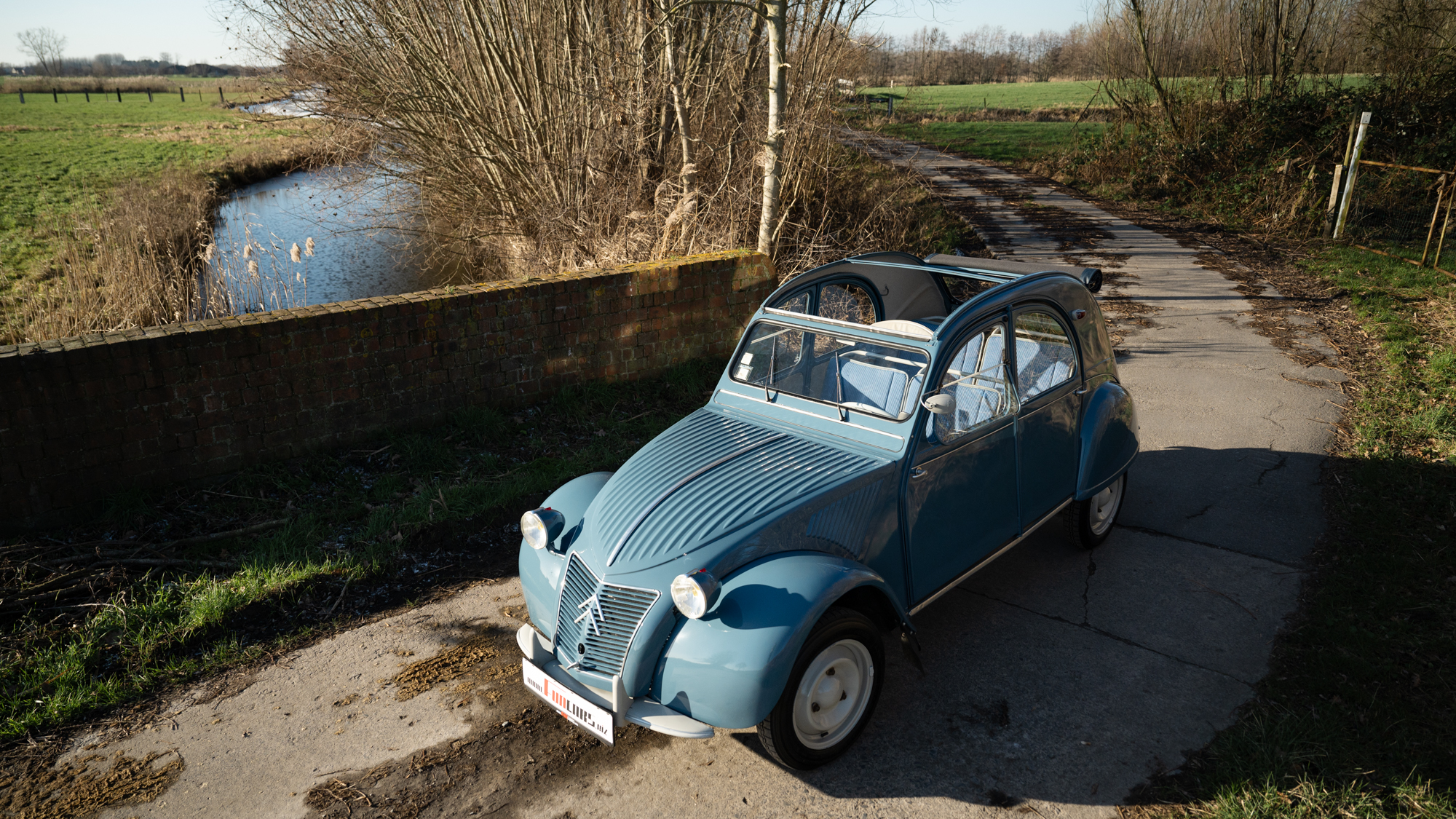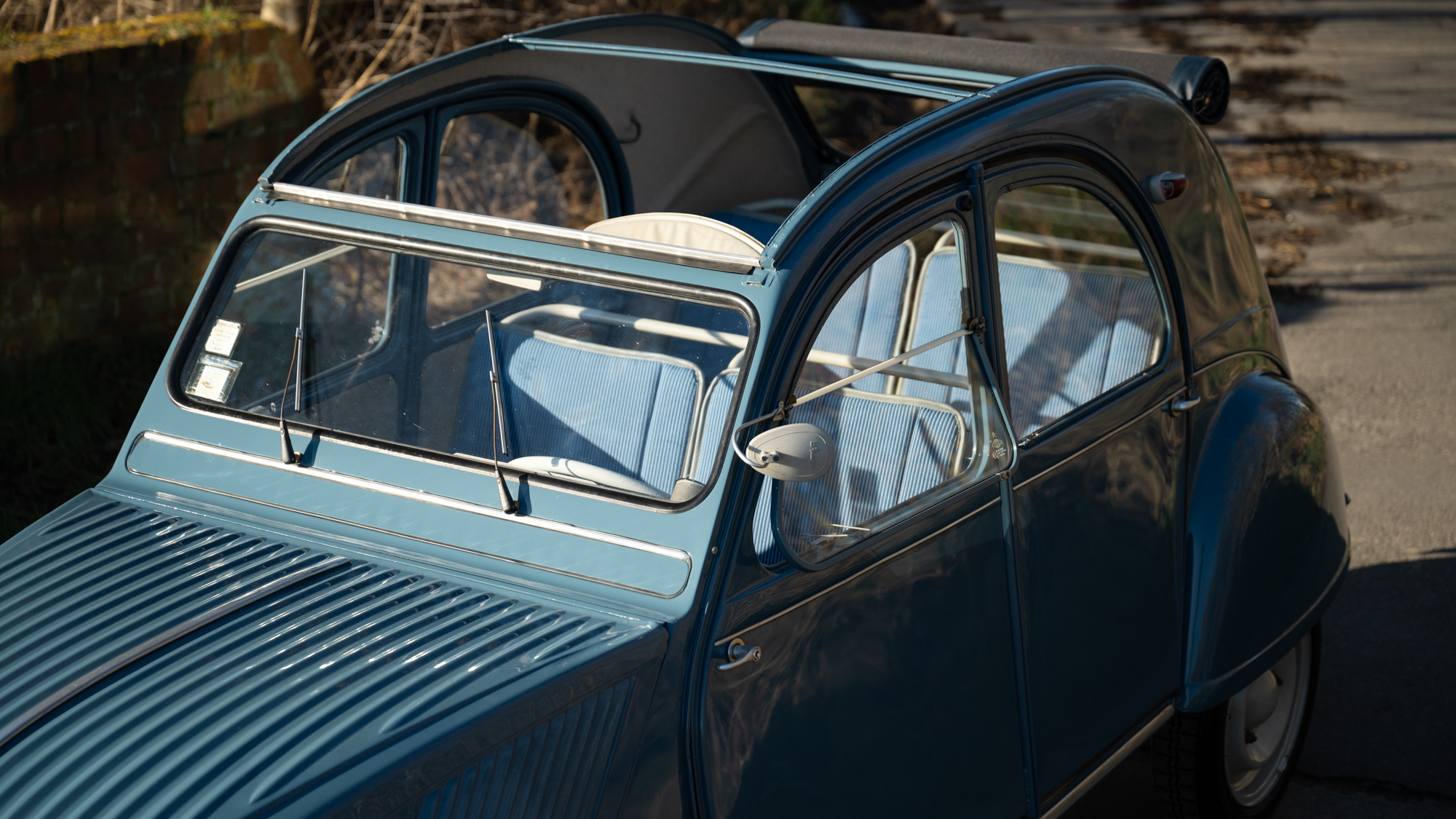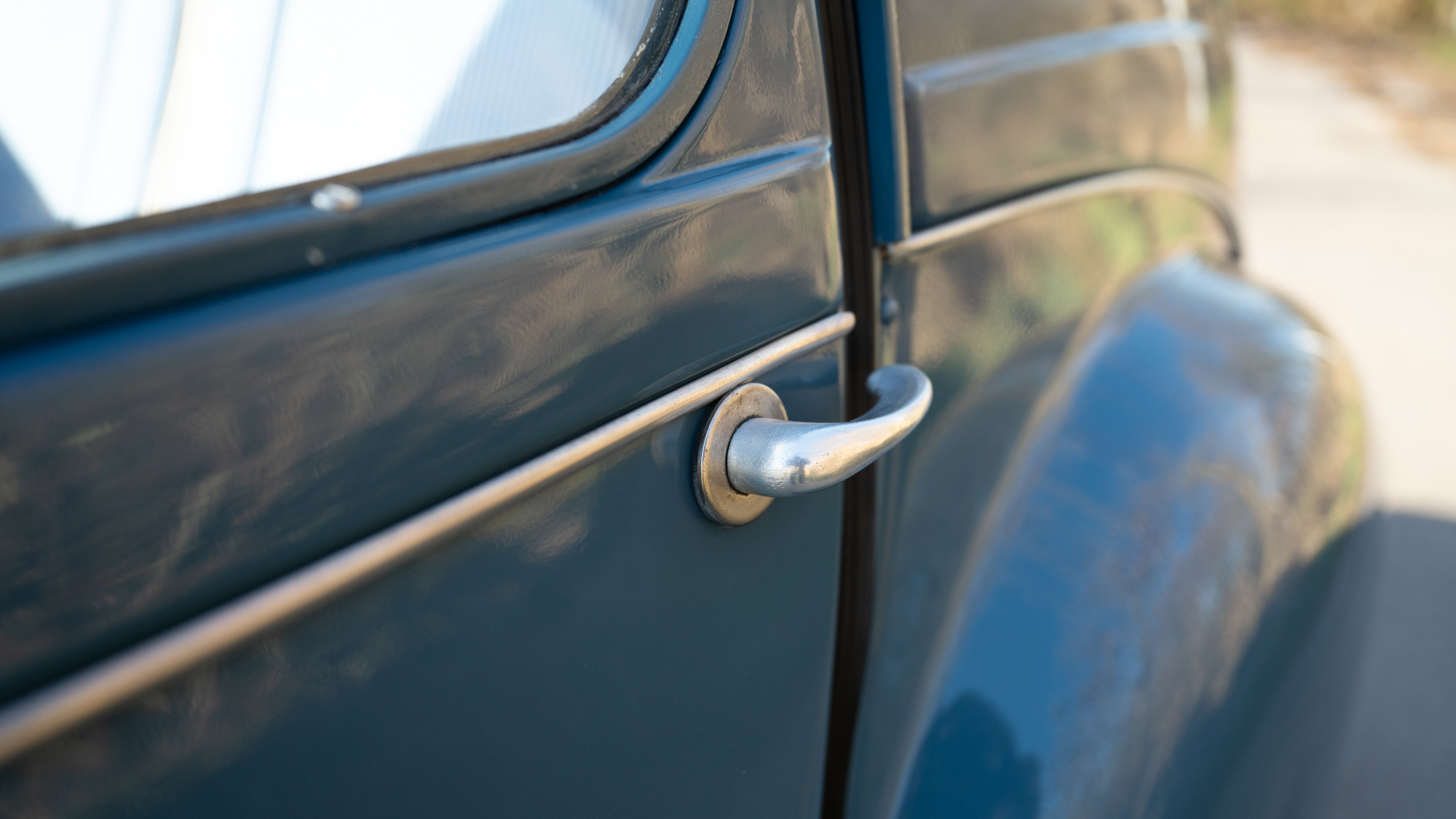CITROEN 2CV
Following André Citroën’s death and the company’s takeover by tire manufacturer Michelin, the new leadership of automaker Citroën decided in 1935 to develop a small car that needed to be suitable for the rugged French countryside: the TPV, or Toute Petite Voiture. Project leader and driving force Pierre-Jules Boulanger described the goal as “an umbrella on four wheels.” Based on market research, it was decided that it should be a vehicle that could carry two farmers with 50 kilograms of potatoes or a barrel with 50 liters of wine. The story also goes that it was supposed to provide the ability to carry a sheep in the car. In doing so, the car had to be so comfortable that eggs in a basket would not break when the car drove over a piece of plowed land. Other requirements were that the car should above all be economical, reliable, cheap and easy to operate: a farmer’s wife had to be able to drive it to market. Also, the farmer, wearing his Sunday hat, had to fit in it so he could go to church by car. The appearance of the car was not considered important.
The car was presented to the press and public at the Paris Motor Show on Thursday, Oct. 7, 1948. One journalist reportedly called the little car “Lelijk Eendje,” this designation (or simply “Eend”) has become a nickname in Dutch.
Series production of the 2CV began July 11, 1949. French countrymen were immediately enthusiastic, which made the waiting time reach three years. The Netherlands was the first exporting country for the 2CV in 1952.
In 1948, the 2CV was equipped with a 375 cc gasoline engine; an air-cooled OHV engine with two cylinders in a boxer arrangement. The basis of this engine remained the same until the end of production, only a little more power was extracted from it each time. The 2CV was the first car equipped with radial tires.
Early models had virtually no dashboard. Gasoline levels were gauged via a dipstick that, attached to the fuel cap, had to be inserted into the tank. The wipers were hand-operated or were linked to the speedometer so they did not work at idle.
The back seat of a duck can be removed. This allowed the storage space in the trunk to be increased. The bench was also used separately to sit down for a while during a long trip, for example, and those who took the duck on a camping vacation could put the bench near the tent.
Over the years, minor changes have been made to the 2CV over and over again. A 1987 Duck looks seemingly the same as a 1950 one, but differ on almost every detail. The basis has always remained the same: a chassis with a body and an air-cooled two-cylinder engine on top.
In 1951, the 2CV received an ignition switch and a lockable driver’s door.
In September 1954, the AZ was released, with a considerably faster and more powerful engine by the standards of the time: 12HP and 425cc.
In 1965, the “suicide” doors – which opened “the wrong way around” – were replaced with regular doors with the hinges on the front.
We are proud to offer this fine specimen from 1960. This is an early 2CV with ribbed hood and the “suicide doors”. With the car is still its original warranty card indicating the first owner.
According to the documentation that comes with the car, it has had 4 owners in France after which the car went to the Netherlands in 2015 to undergo a total restoration between 2015 and 2020.
All invoices from this restoration are present. Very many photos were also taken during this restoration.
In 2023, the gearbox and engine were still overhauled.
The car has a certificate of Authenticity issued by Citroen Heritage.
Very cool thing about this car is that it is also equipped with the optional Citroen Radio!
Don’t hesitate to come see this beauty!
- Year1960
- BrandCitroen
- Model2CV
- BodyConvertible
- Mileage62.730 km (38.978 mi)
- Power12 hp (8 kW)
- Cylinder capacity421 L
- SteeringLeft
- TransmissionManual
- DriveFront wheel drive
- Interior colorBlue
- Interior materialFabric
- Exterior colorBlue
- Fuel typePetrol
- ConditionVery nice
- Ready to driveYes
